Everything You Ever Wanted to Know About COCOA!
Author, PJ Hamel, writes food articles for King Arthur Flour’s blog (https://www.kingarthurbaking.com/blog) and a while ago she shared the most helpful information on cocoa. Since we’re heading into baking season, I thought you might be interested in what she had to say.
Her article theme was, “Can Dutch-processed be substituted for natural cocoa?” and she launched into her information by asking “What kind of cocoa powder do you have in your pantry?”
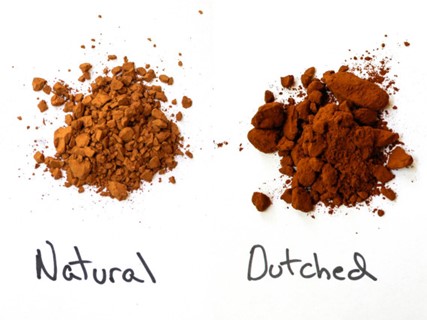
My answer: “The stuff in a brown can.” (I knew this article was for me.) PJ went on to say “…even if you know the difference between Dutch-process and natural and black cocoa and the various blends…and don’t forget cocoa rouge — there’ll come a time when you’re out of one, you want to substitute another, and you’re just not quite sure if that substitution is going to work out.”
Yup, this information was for me all right. I’d never even heard of black cocoa, let alone cocoa rouge.
Right away I learned the good news: Most recipes from a reliable source will call for “unsweetened cocoa, Dutch-process, or natural.” So whichever cocoa you have, you’re good to go: all cocoas are either natural or Dutch-process, so either one will work.
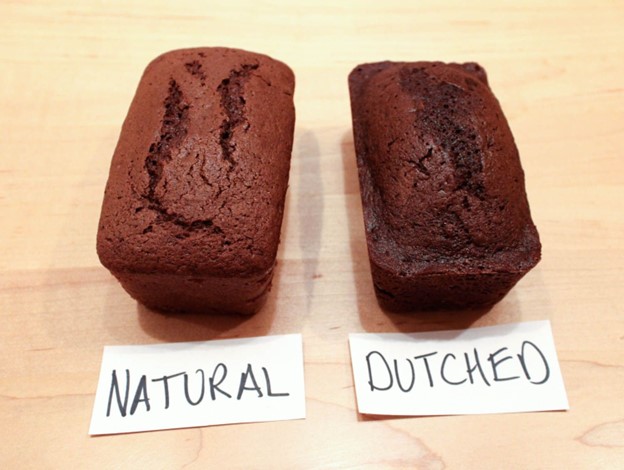
But what if the recipe just says “cocoa,” without specifying a type? PJ says you should expect it’s been developed to work with either natural or Dutch-process cocoa and you can feel free to use either one.
Now I’m going to quote exactly what PJ said, because this gets sciencey:
“One exception: older American recipes. Since Dutch-process cocoa wasn’t widely available to the typical American baker for much of the 20th century, most recipes of the era called simply for “cocoa” — which meant natural cocoa. If you’re sampling one of these older recipes, use Dutch-process if you must, though natural is a better choice.”
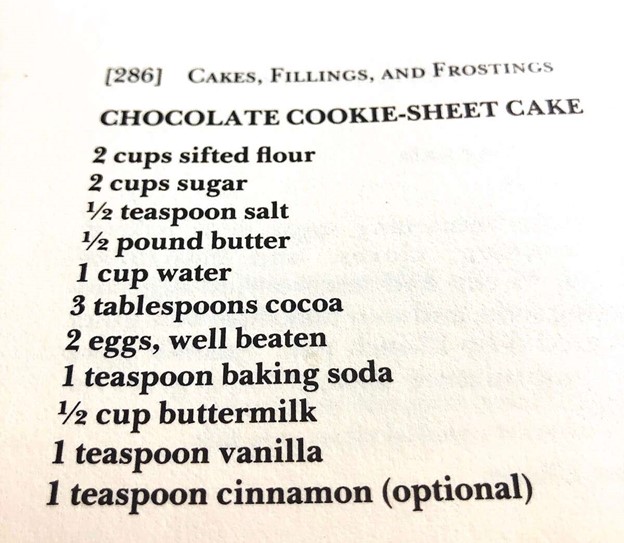
But back to the original cocoa conundrum: What if the recipe calls specifically for Dutch-process or natural cocoa, and you don’t have the one you need — can you substitute what you have?
Natural cocoa is on the top, Dutch-process cocoa is below. PJ explains, “Natural cocoa, the classic type your mom or grandma probably used in her chocolate pound cake, brownies, and hot fudge sauce, is simply unsweetened chocolate ground into powdered form. Typically, most (but not all) of the chocolate’s cocoa butter is removed in order to keep the resulting cocoa free-flowing. Natural cocoa is the kind most often found on your average grocery store shelf.
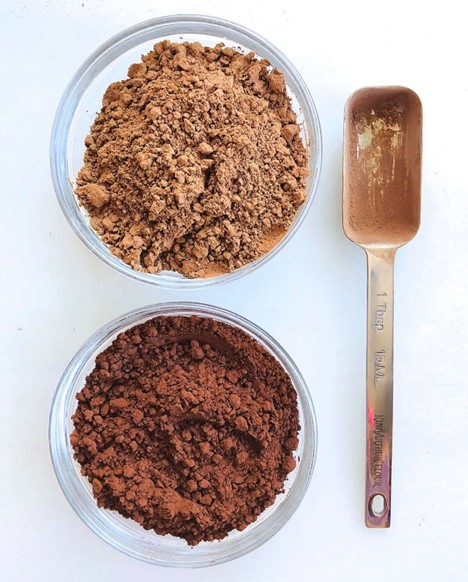
“Dutch-process cocoa, which was considered fairly unfamiliar a generation ago, is natural cocoa treated with an alkalizing agent to lessen its acidity. (No worries, it sounds scarier than it is.) This process makes “Dutched” cocoa smoother tasting and darker in color. Dutch-process cocoa can come in many guises — including "European-style," black cocoa (the darkest/most bitter of all the cocoas), and rouge — but all are Dutch-process and will act accordingly.
“Alkalizing sounds like a plus: why not just use Dutch-process cocoa all the time? Because your recipes call for more than just cocoa, and you want to choose a cocoa that complements (rather than inhibits) the ingredients around it — specifically, the recipe’s chemical leavener: baking soda or baking powder. And that’s why it matters which cocoa you choose.
“Ever notice that recipes calling specifically for natural cocoa are typically leavened with baking soda. Why is this? Natural cocoa is acidic; baking soda is acid’s opposite, a “base.” Combine the two and the cocoa’s acidity is tamed, allowing its pure chocolate flavor to shine through. Mixing an acid and a base also creates a chemical reaction — in this case, bubbles. These bubbles make your muffins rise and your mounds of cookie dough spread into nice round cookies.
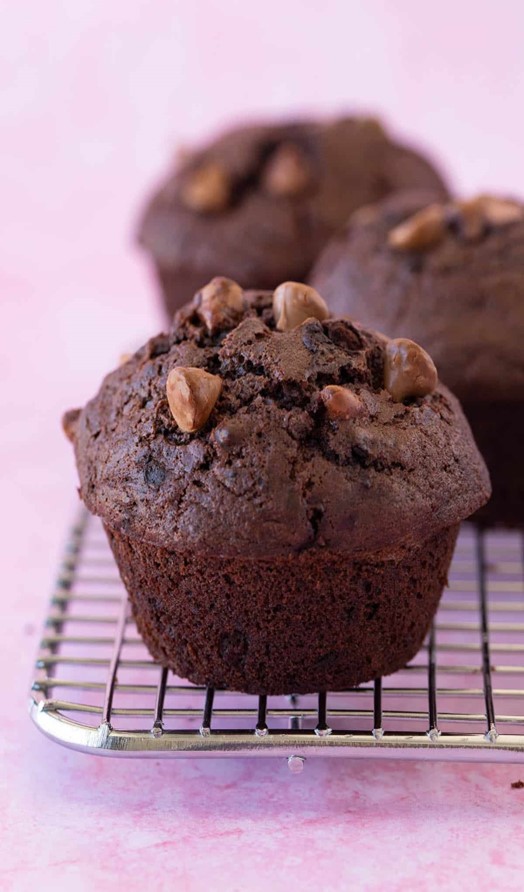
“But recipes made specifically with Dutch-process cocoa will typically call for baking powder (or predominantly baking powder, with perhaps a lesser amount of soda). Why is this? Remember, Dutch-process cocoa has had its acid neutralized. Baking powder is also “neutral” — it includes both baking soda (a base) and an acid, and creates its own chemical reaction once liquid is added. Thus, Dutch-process cocoa isn’t a necessary part of the recipe’s leavening process, and it's there mainly for flavor and color.”
Obviously, it’s best to use whichever cocoa a recipe calls for. But back to the question, “Can you substitute natural cocoa for Dutch-process (or vice-versa) in a pinch?”
YES. You’ll get decent results simply by substituting one cocoa for another without making any adjustments. For better results, though, you’ll want to also adjust the baking soda or baking powder in the recipe to better match the cocoa you’ve chosen.
Here’s what to expect if you simply make a 1-to-1 substitution of natural for Dutch-process, without further changes:
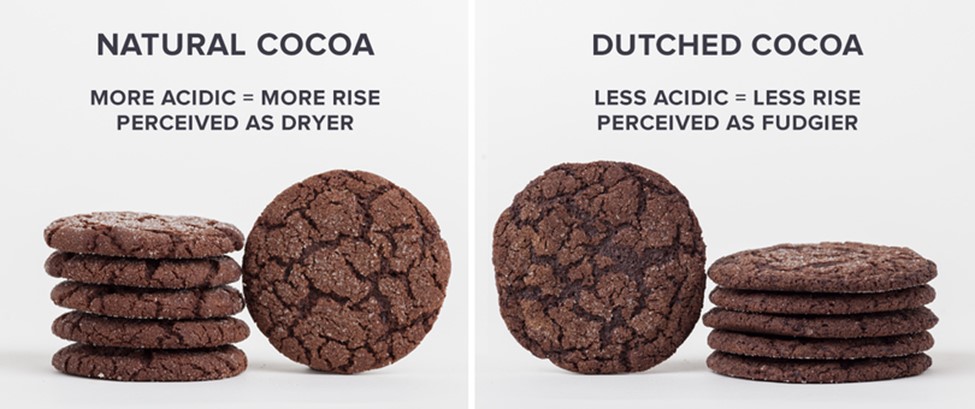
COLOR: Baked goods will have lighter color (tawny rather than dark). Natural cocoa is lighter-colored than Dutch-process, so the difference carries all the way through from the mixing bowl to the plate.
RISE: Since baking powder does the leavening on its own, without the aid of cocoa, your baked goods should rise just fine.
FLAVOR: There’s a subtle tanginess or a slightly bitter edge. This is due to natural cocoa’s acidity, which may not be fully neutralized by the remaining ingredients in the recipe.
“Tweaking the recipe to minimize changes? If your recipe includes 3 tablespoons cocoa or less, there's no need to adjust a thing. If more than 3 tablespoons, replace the baking powder with half the amount of baking soda, leaving the remaining ingredients the same. Because baking soda is a base, this switch will neutralize the acidity in the natural cocoa, improving your baked good's flavor. Note: If the recipe already calls for baking soda as well as baking powder, there’s no need to make any change save substituting the cocoa.”
When making a 1-to-1 substitution of Dutch-process cocoa in recipes calling for natural, without further changes, watch for:
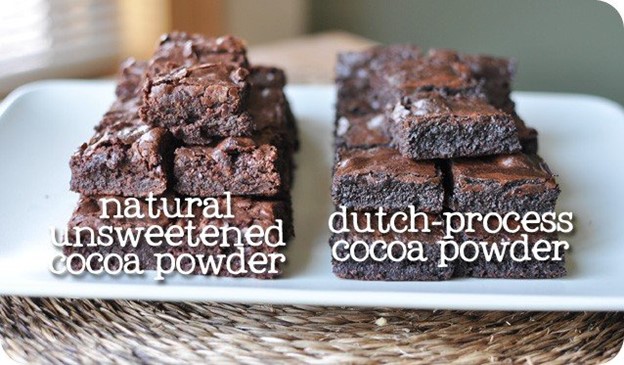
COLOR: Your baked goods will be darker in color; think of the color of dark chocolate vs. milk chocolate.
RISE: Without the acidity of natural cocoa, the baking soda in the recipe won’t react as strongly and the texture of your baked goods may reflect this: cake or muffins may not rise as high, and cookies may edge toward thick and cake-like rather than thin and crunchy.
FLAVOR: You may notice a slight soapy flavor; this is the baking soda, which hasn’t been fully neutralized due to the lack of acid in Dutch-process cocoa.
“Tweaking the recipe to minimize changes? Replace the baking soda with twice the amount of baking powder, leaving the remaining ingredients the same. This change will help your baked goods rise, since without the acid in natural cocoa you need a leavener that provides the necessary rise all on its own (i.e., baking powder). Note: If the recipe calls for baking powder as well as baking soda, or if it calls for vinegar or another acidic ingredient, there’s no need to make any change except substituting the cocoa.”
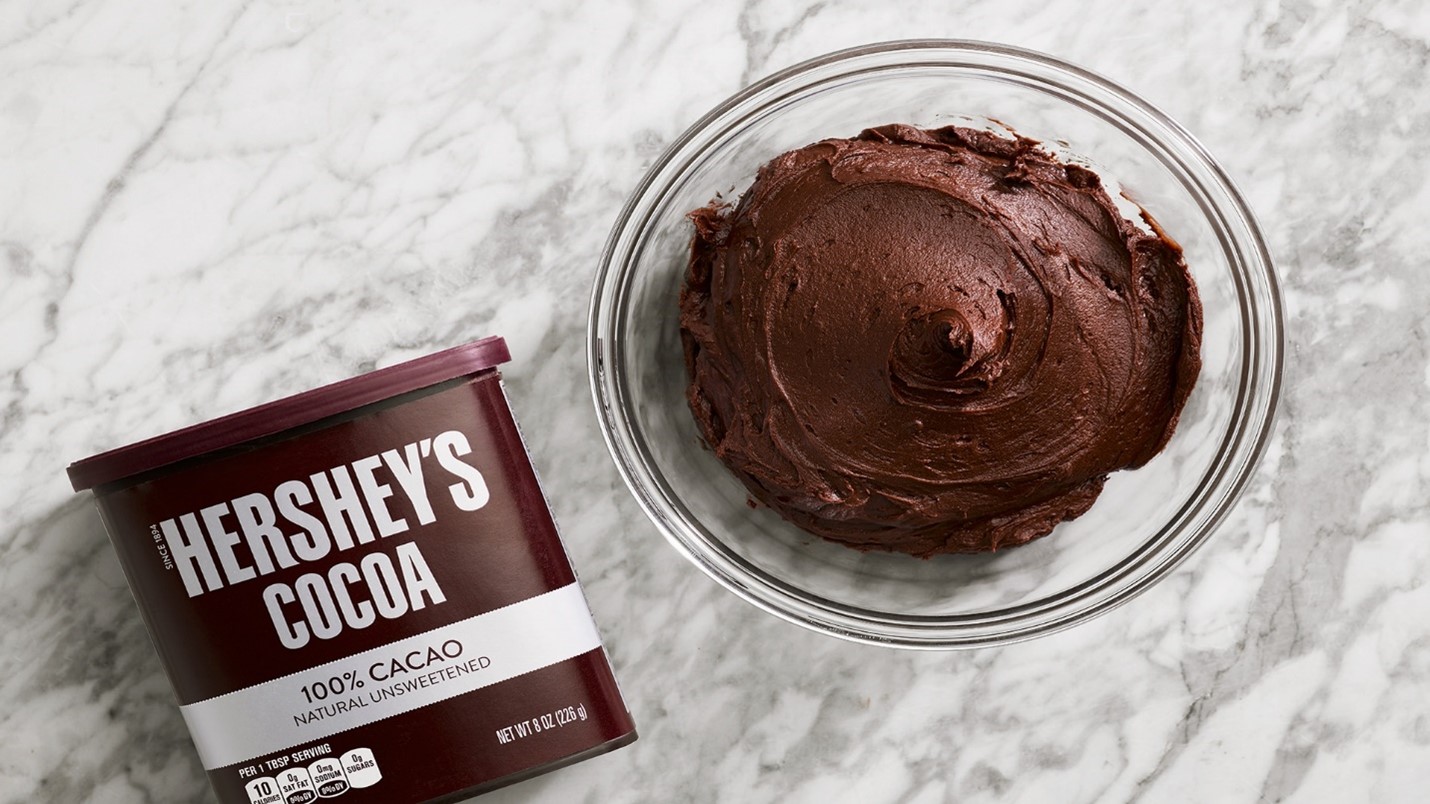
“For hot cocoa, fudge frosting, and certain cookies or cakes (recipes that don’t use baking soda or baking powder) either type of cocoa will work fine, since the cocoa is there solely for flavor and color. In general, natural cocoa offers mild, light flavor (some call it “old-fashioned chocolate flavor”) while Dutch-process will give you a darker, more bittersweet experience.”
Her article theme was, “Can Dutch-processed be substituted for natural cocoa?” and she launched into her information by asking “What kind of cocoa powder do you have in your pantry?”

My answer: “The stuff in a brown can.” (I knew this article was for me.) PJ went on to say “…even if you know the difference between Dutch-process and natural and black cocoa and the various blends…and don’t forget cocoa rouge — there’ll come a time when you’re out of one, you want to substitute another, and you’re just not quite sure if that substitution is going to work out.”
Yup, this information was for me all right. I’d never even heard of black cocoa, let alone cocoa rouge.
Right away I learned the good news: Most recipes from a reliable source will call for “unsweetened cocoa, Dutch-process, or natural.” So whichever cocoa you have, you’re good to go: all cocoas are either natural or Dutch-process, so either one will work.

But what if the recipe just says “cocoa,” without specifying a type? PJ says you should expect it’s been developed to work with either natural or Dutch-process cocoa and you can feel free to use either one.
Now I’m going to quote exactly what PJ said, because this gets sciencey:
“One exception: older American recipes. Since Dutch-process cocoa wasn’t widely available to the typical American baker for much of the 20th century, most recipes of the era called simply for “cocoa” — which meant natural cocoa. If you’re sampling one of these older recipes, use Dutch-process if you must, though natural is a better choice.”

But back to the original cocoa conundrum: What if the recipe calls specifically for Dutch-process or natural cocoa, and you don’t have the one you need — can you substitute what you have?
Natural cocoa is on the top, Dutch-process cocoa is below. PJ explains, “Natural cocoa, the classic type your mom or grandma probably used in her chocolate pound cake, brownies, and hot fudge sauce, is simply unsweetened chocolate ground into powdered form. Typically, most (but not all) of the chocolate’s cocoa butter is removed in order to keep the resulting cocoa free-flowing. Natural cocoa is the kind most often found on your average grocery store shelf.

“Dutch-process cocoa, which was considered fairly unfamiliar a generation ago, is natural cocoa treated with an alkalizing agent to lessen its acidity. (No worries, it sounds scarier than it is.) This process makes “Dutched” cocoa smoother tasting and darker in color. Dutch-process cocoa can come in many guises — including "European-style," black cocoa (the darkest/most bitter of all the cocoas), and rouge — but all are Dutch-process and will act accordingly.
“Alkalizing sounds like a plus: why not just use Dutch-process cocoa all the time? Because your recipes call for more than just cocoa, and you want to choose a cocoa that complements (rather than inhibits) the ingredients around it — specifically, the recipe’s chemical leavener: baking soda or baking powder. And that’s why it matters which cocoa you choose.
“Ever notice that recipes calling specifically for natural cocoa are typically leavened with baking soda. Why is this? Natural cocoa is acidic; baking soda is acid’s opposite, a “base.” Combine the two and the cocoa’s acidity is tamed, allowing its pure chocolate flavor to shine through. Mixing an acid and a base also creates a chemical reaction — in this case, bubbles. These bubbles make your muffins rise and your mounds of cookie dough spread into nice round cookies.

“But recipes made specifically with Dutch-process cocoa will typically call for baking powder (or predominantly baking powder, with perhaps a lesser amount of soda). Why is this? Remember, Dutch-process cocoa has had its acid neutralized. Baking powder is also “neutral” — it includes both baking soda (a base) and an acid, and creates its own chemical reaction once liquid is added. Thus, Dutch-process cocoa isn’t a necessary part of the recipe’s leavening process, and it's there mainly for flavor and color.”
Obviously, it’s best to use whichever cocoa a recipe calls for. But back to the question, “Can you substitute natural cocoa for Dutch-process (or vice-versa) in a pinch?”
YES. You’ll get decent results simply by substituting one cocoa for another without making any adjustments. For better results, though, you’ll want to also adjust the baking soda or baking powder in the recipe to better match the cocoa you’ve chosen.
Here’s what to expect if you simply make a 1-to-1 substitution of natural for Dutch-process, without further changes:

COLOR: Baked goods will have lighter color (tawny rather than dark). Natural cocoa is lighter-colored than Dutch-process, so the difference carries all the way through from the mixing bowl to the plate.
RISE: Since baking powder does the leavening on its own, without the aid of cocoa, your baked goods should rise just fine.
FLAVOR: There’s a subtle tanginess or a slightly bitter edge. This is due to natural cocoa’s acidity, which may not be fully neutralized by the remaining ingredients in the recipe.
“Tweaking the recipe to minimize changes? If your recipe includes 3 tablespoons cocoa or less, there's no need to adjust a thing. If more than 3 tablespoons, replace the baking powder with half the amount of baking soda, leaving the remaining ingredients the same. Because baking soda is a base, this switch will neutralize the acidity in the natural cocoa, improving your baked good's flavor. Note: If the recipe already calls for baking soda as well as baking powder, there’s no need to make any change save substituting the cocoa.”
When making a 1-to-1 substitution of Dutch-process cocoa in recipes calling for natural, without further changes, watch for:

COLOR: Your baked goods will be darker in color; think of the color of dark chocolate vs. milk chocolate.
RISE: Without the acidity of natural cocoa, the baking soda in the recipe won’t react as strongly and the texture of your baked goods may reflect this: cake or muffins may not rise as high, and cookies may edge toward thick and cake-like rather than thin and crunchy.
FLAVOR: You may notice a slight soapy flavor; this is the baking soda, which hasn’t been fully neutralized due to the lack of acid in Dutch-process cocoa.
“Tweaking the recipe to minimize changes? Replace the baking soda with twice the amount of baking powder, leaving the remaining ingredients the same. This change will help your baked goods rise, since without the acid in natural cocoa you need a leavener that provides the necessary rise all on its own (i.e., baking powder). Note: If the recipe calls for baking powder as well as baking soda, or if it calls for vinegar or another acidic ingredient, there’s no need to make any change except substituting the cocoa.”

“For hot cocoa, fudge frosting, and certain cookies or cakes (recipes that don’t use baking soda or baking powder) either type of cocoa will work fine, since the cocoa is there solely for flavor and color. In general, natural cocoa offers mild, light flavor (some call it “old-fashioned chocolate flavor”) while Dutch-process will give you a darker, more bittersweet experience.”
 Alice Osborne
Alice Osborne
DVO Newsletter Contributor since 2006
Email the author! alice@dvo.com
Sources:
- www.huffpost.com
- www.seriouseats.com
- www.sweetestmenu.com
- www.kingarthurbaking.com
- www.melskitchencafe.com
- www.hersheyland.com
